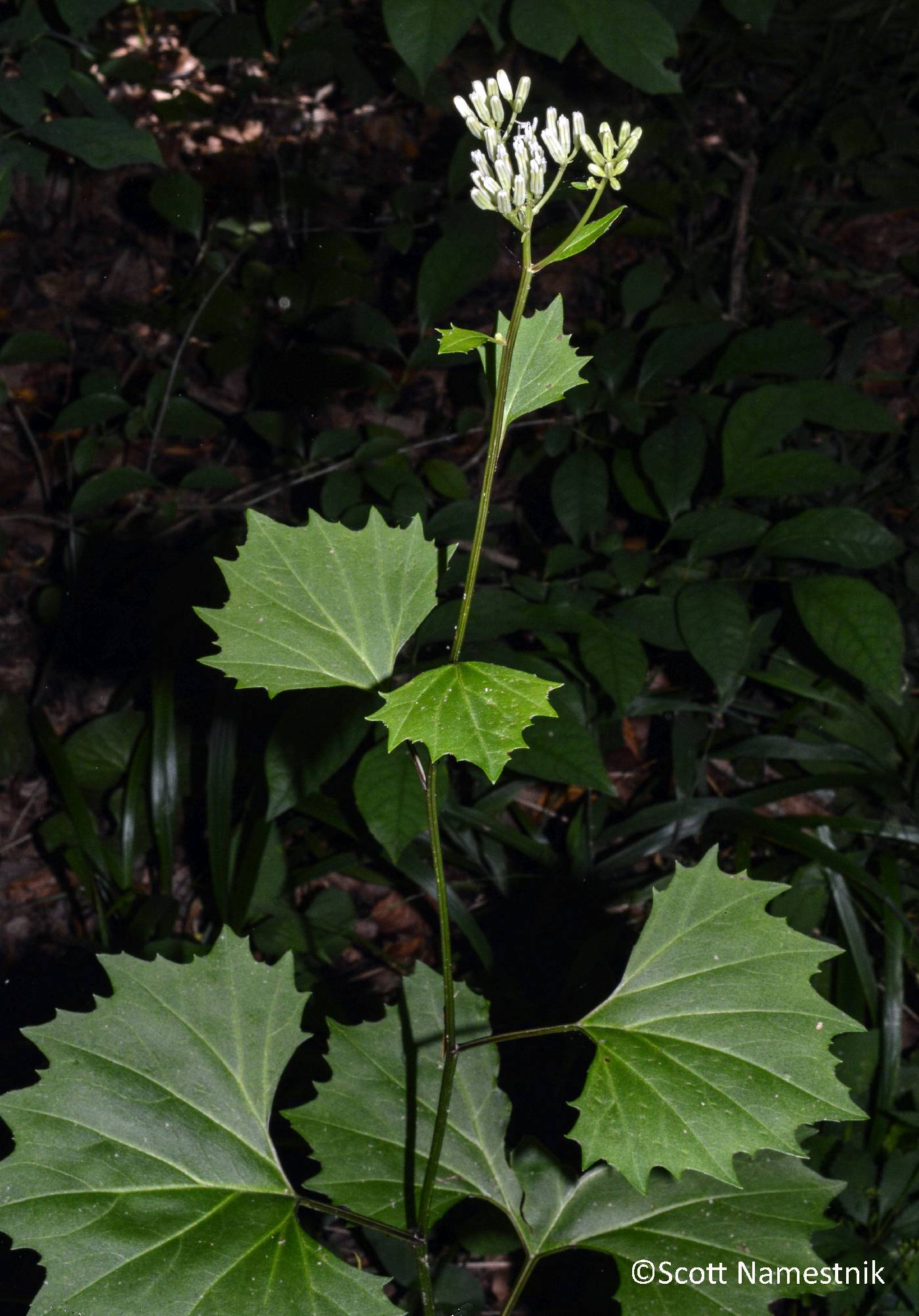
|
Family: Asteraceae |
Perennials, 30-300 cm. Stems usually 1, erect (unbranched proximal to heads). Leaves basal and cauline; alternate; petiolate or sessile; blades palmately nerved, mostly cordate, deltate, elliptic, hastate, ovate, or reniform, sometimes lanceolate or lance-linear, margins entire, ± dentate to denticulate, sinuate, or lobed, faces usually glabrous. Heads discoid, in corymbiform arrays. Calyculi 0. Involucres cylindric to turbinate, 2.5-5 mm diam. Phyllaries persistent, 5 in 1-2 series, erect (spreading in fruit), distinct, ovate or oblong to linear (midveins sometimes winged), ± equal, margins scarious (hyaline). Receptacles flat or convex (usually with central cusp 0.5-2 mm), foveolate, epaleate. Ray florets 0. Disc florets 5, bisexual, fertile; corollas usually creamy or greenish white, rarely purplish distally, tubes longer than to equaling campanulate to funnelform throats, lobes 5, spreading or recurved, lanceolate; style branches: stigmatic areas continuous, apices truncate or truncate-penicillate (appendages essentially 0). Cypselae clavate, cylindric, ellipsoid, or ± fusiform, (4-)10-15-ribbed or -nerved, glabrous (resinous); pappi persistent, fragile, or readily falling, of 100-120+, white, smooth or barbellate bristles. x = 28. The name Cacalia Linnaeus has been misapplied to Arnoglossum.
|
This project was made possible in part by the Institute of Museum and Library Services [MG-70-19-0057-19].
Powered by Symbiota



